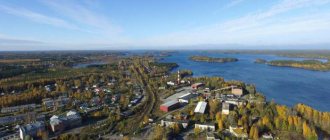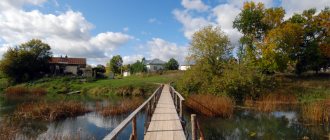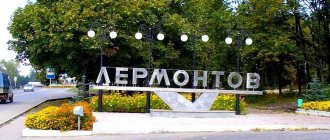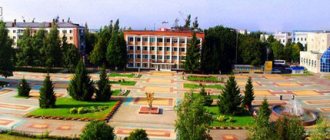After the invasion of Basayev and Khattab’s detachments into Dagestan and the beginning of the Second Chechen War, the situation in Dagestan worsened - the terrorist and sabotage activity of illegal armed groups increased sharply.
In 1999, one of the most notorious terrorist attacks occurred in the city of Buynaksk. In subsequent years, a number of sabotage and terrorist attacks were committed in this city. Below is information about the loudest and most resonant of them. The presented chronicle also contains facts about the attempts of security forces to counter terrorist threats in the city.
Modernity
On September 4, 1999, a terrorist attack in the city killed more than 60 people and injured hundreds. Two multi-storey buildings and dozens of private houses were destroyed.
On August 13, 2009, on the outskirts of the city, a police post and a sauna located a few meters away were attacked. 11 people died.
On August 20, 2013, during the storming of a residential building in Buynaksk, 10 militants were killed, including Bammatkhan Sheikhov, the leader of the Buynaksk group of illegal armed groups.
Economy and culture
There are factories in Buinaksk - furniture, footwear, knitwear, clothing; factories - aggregate, instrument-making and tire repair, canning (produces preserves, jams, compotes from cherries, apricots, apples). The Buinaksk region is a climatic resort area (anti-tuberculosis sanatoriums, etc.).
The city is home to the Avar Drama Theater and the largest mosque and madrasah in the North Caucasus.
The city is built up mainly with one-story houses surrounded by gardens. In the central part, the building of the former residence of the Governor-General of the Dagestan region, decorated with fluted tetrahedral columns (19th century; now the building of the Avar Pedagogical School), has been preserved. On the square in front of the building there is an obelisk at the Mass Grave of twelve revolutionaries (including Makhach Dakhadaev and Ullubiy Buynaksky).
In the vicinity of Buinaksk, rock paintings from the late 2nd - early 1st millennium BC have been preserved. (hunting scenes, images of wild and domestic animals, etc.).
Buynaksk is a city of interesting fate and glorious traditions
Buynaksk is a city of interesting fate and glorious traditions. This is the first administrative center of the Dagestan region, the first capital of Dagestan. In 1921, the city of Temir-Khan-Shura was renamed Buinaksk.
People lived on the territory of modern Buinaksk many years ago. On the Kavagyar-Battery rock on the territory of the modern city, drawings were discovered that were carved by ancient hunters 4-6 thousand years ago, among them hunters on horseback and deer. tours. goats. There is a legend that the commander Timur ordered his tent to be erected on the top of the rock in 1396, returning after a campaign in Central Asia - the block of stone occupied a dominant position over the surrounding area. According to legend, this is why the village, and later the city, received the name “Temir-Khan-Shura”, which translated means “Headquarters of Khan Temir”.
Buynaksk
With the beginning of the Caucasian War, Temir-Khak-Shura acquired great importance as a transit point on the way from the plain to the mountains and back. There was a need to build a military fortification here. The command of the Russian army appreciated the strategic position of the village as a center of communication of the utmost military and economic importance, since not only troops, but also most trade caravans from the mountains to the plain and back passed through Temir-Khen-Shura. In 1836, tsarist troops built a two-story watchtower near the Cavalier Battery, and installed a battery of cannons throughout the entire area of the rock. Residents were relocated to Halimbekaul. The village turned into a military fortification.
Bulach Gadzhiev describes him this way. The fortress had 3 versts 150 fathoms along the perimeter. It was surrounded on its sides by stone walls, and on its quarters, in the north-west, it was protected by the Cavalier Battery rocks. Five two-story stone towers guarded the entrance to the fortress. The fortress walls were interrupted by massive gates. There were four of them: Ishkarta, Derbent, Avar and the Cavalier Battery tower. In case of danger, each tower defended the approaches to the fortress with its fire. During the bazaars, people going to the fortress left their weapons with the sentry. At night, all four gates were closed, and security was tightened. Those who were late until the morning had to while away the time on the other side of the walls of the royal fortress. In the second half of the 19th century, the need for defensive towers, as well as for the fortress itself, disappeared. Wall stones and bricks were dismantled for construction by the civilian population. The city was expanding. Since there was no free space inside the fortification, houses were erected behind the collapsed fortress walls. New streets appeared. The population of Temir-Khan-Shura consisted almost entirely of soldiers and officers.
Following the military, merchants and townspeople from Kizlyar arrived in the city. Astrakhan and Tiflis. In Temir-Khen-Shur one could also meet people who came from the depths of Russia. In the middle of the 19th century, a bazaar arose where the residents of Kofyrkumukh Muspmmaul went. Halimbekaul and other villages brought hay, firewood, fruits, grapes and metal products. People hurried to the market as their only holiday.
In March 1841, the position of military commander was officially established in Temir-Khan-Shura. He had a scribe for correspondence and a translator who knew local languages. A post office opened in 1842. In 1851, the civilian population of the fortress already numbered over a thousand people.
Lake Ak-Kal brought a lot of disaster to the townspeople. located almost in the center of the fortress. Household waste was dumped into it. Mosquitoes nesting in the reeds spread fever. The mortality rate from it was no lower than from the disasters of the warrior. In 1854, soldiers dug a ditch through which water from the lake flowed into the Atlan-Ozen River. Enterprising people turned the bottom of the former lake into vegetable gardens and obtained excellent harvests.
In 1866, the fortification of Temir-Khan-Shura received city status. Industry gradually developed. In 1866, there were nine tiny factories in the city with workers ranging from 1 to 12 people. They produced soap, bricks, lime, leather goods and wine and vodka products; 40 kerosene lanterns were placed in the central part of the city.
Soon it was decided to connect Port Petrovsk with a highway to Temir-Khan-Shura. Work began in 1864 and continued for five years. From February 8, 1868, Temir-Khan-Shura could communicate by telegraph with Tiflis, where the Tsar’s deputy in the Caucasus lived. In the same year, the Red Cross Society was established in the town, which became widespread in Russia after the Crimean War.
In 1870, city councils were created in Russia, to which only wealthy people could be elected according to property qualifications. However, in 1895, a new law followed, which introduced simplified city government. Instead of the city duma and city administration in Temir-Khan-Shur, Derbent and Petrovsk, there were meetings of commissioners and the city mayor with one or two assistants to him. Voting was carried out using numerous multi-colored balls, which were dropped into many boxes. By the beginning of the elections, all voters had to be in place. Latecomers were not admitted. Military personnel, people without real estate, workers, peasants, and artisans were not allowed to participate in the elections. Bugach Gadzhiev gives the names of some of the city leaders: Zakutsvskii - retired major. Kzkhaev was an Armenian manufacturer, Khiari Gadzhiev owned canning factories.
By the beginning of the 20th century, Temir-Khan-Shura became the main supplier of fruit jam and canned food to Russian markets. In 1901, production of canned cherries and sweet cherries. 15 people were engaged in plums, apricots, and peaches in Temir-Khan-Shur. Cargo from Temir-Khan-Shura was delivered on carts and vans to Petrovsk and from there across the Caspian Sea to the Volga, then by water and land to customers. The annual export of canned food outside the Dagestan region reached 600 thousand poods.
In 1909, the city government decided to illuminate the city with electric light. The work was entrusted to the contractor Shafer, and in 1911 the power plant was launched.
On the eve of the First World War, Temir-Khan-Shura was already home to 15 thousand people - Russians, Kumyks, Tats - European Jews, Avars. Dargins, Laks, Lezgins, Poles, Armenians and representatives of other peoples. Russians were in the civil service. Few of them were engaged in trade. The latter was concentrated in the hands of the Tats and Kumyks. On Thursdays there was a bazaar where they sold shawls, burkas, leather, eggs, flour, cheese, butter, cabbage, onions, potatoes, dried fresh fruits, vegetables, poultry, as well as clay jugs and so on.
The great Russian artist Pyotr Karlovich Uslar, a world-famous linguist, author of excellent research in the field of Caucasian linguistics, and initiator of the creation of secular schools in Dagestan, visited Temir-Kham Shura.
Famous artists Franz Roubaud and Eugene Lanceray also visited the city. The center of the Dagestan region and the royal persons were not spared. In September 1858, the Grand Dukes, the sons of Nicholas I, visited Dagestan. From Derbent through Deshlagar, Gubden, Kara6uddhkeng. Dzhengutai they arrived at Temir-Khan-Shuru.
Population
The population, according to the 2010 Russian Federation Census, was 62,623 people (in 1897 - 9.2 thousand people, in 1926 - 9.5 thousand people, in 1979 - 45.1 thousand people, in 1992 - 58.5 thousand people, in 2002 - 61,437 people).
National composition of the population as of 2002:
| Number of people, people | Share, % | |
| Avars | 28 289 | 46,0% |
| Kumyks | 19 304 | 31,4% |
| Laktsy | 4 219 | 6,9% |
| Dargins | 3 791 | 6,2% |
| Russians | 3 710 | 6,0% |
| Lezgins | 475 | 0,8% |
| Azerbaijanis | 403 | 0,7% |
| Tabasarans | 136 | 0,2% |
| Chechens | 114 | 0,2% |
| Mountain Jews | 49 | 0,1% |
| Nogais | 47 | 0,1% |
| Others | 936 | 0,2% |
Story
The historical name of the city is Temir-Khan-Shura. The city received its modern name in 1922 in honor of one of the leaders of the revolutionary movement in Dagestan, Ullubiy Buynaksky.
According to legend, the founding of the city is associated with the name of the Central Asian conqueror Timur (Tamerlane, Temir Khan). In 1396, returning from a campaign against the Golden Horde and Rus', Timur’s army camped at a lake called Temir-Khan-Shura by the local highlanders. Soon after Timur left, an aul with the same name as the lake arose on the site of his army's camp (the lake itself was drained in 1854). Subsequently, the Avar-Kakheti road was built near the village, leading from Dagestan to Georgia.
The favorable geographical position near the mountain passes to the interior regions of Dagestan became the reason for the construction of a Russian military fortification near the village in 1834. During the Caucasian War (1817-1864), the Temir-Khan-Shura fortress in 1843 withstood a month and a half siege of the highlanders led by Imam Shamil, and in 1849 - a raid by Hadji Murad's horsemen.
Since 1847, Temir-Khan-Shura has been the seat of the manager of the civil part in the Caspian region, since 1860 it has been the center of the Dagestan region. City - since 1866
In the 19th century, especially after the capture of Shamil (1859) and the end of the Caucasian War, the city attracted the attention of cultural figures. Poets and writers A.I. visited Temir-Khan-Shura. Polezhaev, A.A. Bestuzhev-Marlinsky, artists F.T. Rubo, I.K. Aivazovsky, N.A. Yaroshenko, surgeon N.I. Pirogov, French writer Alexandre Dumas the father.
In November 1920, in Temir-Khan-Shura, at the Congress of the Peoples of Dagestan, a declaration of the government of the RSFSR on the autonomy of Dagestan was proclaimed.
Buinaksk was heavily damaged during the devastating earthquake of May 14, 1970.









